Don’t overlook innovative SuDS
Paul Hurcombe, Severn Trent
Whilst we are all looking to identify opportunities to incorporate multiple benefit SuDS features within our flood alleviation schemes we need to be mindful that we don’t overlook opportunities to be innovative with existing infrastructure or overlook the obvious.
As part of a partnership approach, Severn Trent have been working closely with the Nottinghamshire County Council to develop an holistic solution to address internal and external flooding associated with excessing surface water run-off and deficiencies in the sewerage system. As is the case with such problems detailed 2D overland flood routing was undertaken to understand flow paths and verify flooding mechanisms. The interesting outcome being that flood paths supported flooding to an underutilised pedestrian subway which needed extensive cleaning following a flood event. Due to the nature of the location there were limited opportunities to retrofit SuDS to improve surface water management and so a solution was developed to formalise the flooding to the pedestrian subway and reuse the structure as part of the wider solution. As the subway was no longer needed it provided a ready-made storage opportunity which could be complemented by using geo-cellular storage to infill the access ramps. The base of the existing structure would also be punctured to optimise infiltration opportunities.
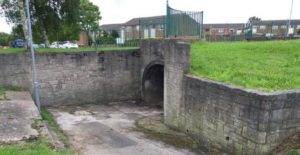
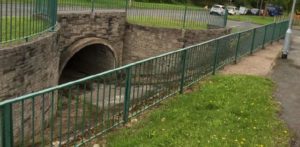
Photographs showing the pedestrian subway
To supplement the solution upstream road gullies were diverted into four rain gardens/soakaway facilities with a new road level pedestrian crossing installed to replace the subway. On completion of the scheme the subway land is to be transferred to Severn Trent as a public sewer.
An overview of the solution design is shown below:
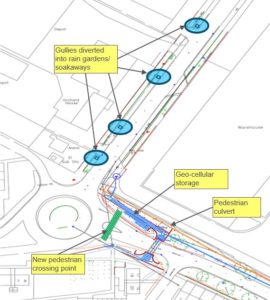
Overview of the design
In summary this solution provided a great opportunity for several flood risk management authorities to work together but also gave new life to existing unwanted pedestrian subway structure and fits in nicely with the principles of “recycle reuse reduce”.
Our second case study demonstrates the benefit of not overlooking the obvious. Below is a photograph of flooding on a small housing estate subjected to historic flooding issues.
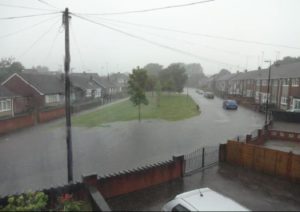
Photograph showing extent of flooding and the ‘amenity island’
As we all know photographs and videos taken during flooding events are priceless to help solution engineers understand the root cause of a problem and develop effective solutions. What is obvious from the above photograph is that whilst there is clearly a lot of flood water, the grassed amenity area was an ‘island’. This is something that is common practice in our urbanised areas with grassed verges being above road surfaces and traffic roundabouts being raised. From a surface water management perspective this is not ideal as gravity is preventing flows from impermeable areas getting to a place it can permeate! By working closely with the Coventry City Council it was established that there was a combination of issues at play, with sewer capacity deficiencies being exacerbated by overland surface water flooding and restrictions in a nearby culverted watercourse. Following the completion of an integrated model a catchment solution was developed to provide attenuation on the foul sewer network but also lower the amenity area to provide a SuDS swale which allowed highway gullies to be separated from the foul sewer. The scope of the solution also included upstream surface water routing to hold back run-off and manage flood risk.
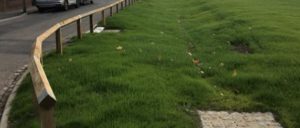
View of the retrofit SuDS swale located within the amenity area
This partnership solution was jointly funded by through multi source flooding mechanisms to alleviate flood risk to the community.
The learning point from this case study is not to overlook the obvious and where possible look for opportunities to incorporate existing green infrastructure into more sustainable blue green solutions, whether they be existing amenity areas, highway verges or traffic roundabouts.
Tags: retrofit SuDS, SuDS